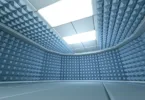In the dynamic world of commercial construction, achieving the delicate balance between creativity, functionality, and cost-effectiveness is a constant challenge. The advent of design-build services has revolutionized the industry by offering an integrated approach that fosters collaboration between architects, engineers, contractors, and clients from the project’s inception. However, one of the critical aspects that demand meticulous attention in commercial design-build projects is budgeting and cost control. This article delves into the strategies and considerations that play a pivotal role in ensuring successful budget management within the realm of commercial design-build.

Understanding the Complexity
Commercial design-build projects come with their unique complexities due to the fusion of creative design aspirations and practical construction requirements. Unlike traditional construction methods, design-build requires a comprehensive understanding of how each design decision can impact the project’s overall cost. Moreover, various stakeholders with diverse perspectives must align their visions to develop a design that meets budgetary constraints while not compromising on quality.
Early Collaboration and Detailed Planning
One of the primary strengths of the design-build approach is the early collaboration between design build contractors, architects, and other specialists. This collaboration allows for a holistic evaluation of design concepts in terms of their feasibility and cost implications. By involving all stakeholders from the outset, potential discrepancies between creative visions and budget expectations can be identified and addressed promptly.
During the planning phase, a comprehensive project scope and detailed budget breakdown are established. This entails itemizing costs for materials, labor, permits, equipment, and any unforeseen contingencies. Having a detailed plan upfront provides a solid foundation for effective cost control throughout the project’s lifecycle.
Risk Management and Contingency Planning
In commercial design-build projects, unforeseen challenges are almost inevitable. It’s crucial to incorporate contingency planning to account for unexpected changes or complications that might arise during construction. Allocating a reasonable contingency fund can act as a safety net, ensuring that the project can adapt to unforeseen circumstances without derailing the budget.
Embracing Value Engineering
Value engineering is a systematic approach to optimizing project costs without compromising quality. This process involves evaluating design elements, materials, and methods to identify areas where cost savings can be achieved without sacrificing the project’s overall integrity. Value engineering encourages innovative thinking and often leads to creative solutions that enhance both cost efficiency and project outcomes.
Transparency and Communication
Effective communication and transparency among all stakeholders are cornerstones of successful budgeting and cost control. Regular meetings to discuss progress, potential challenges, and cost-related matters keep everyone informed and aligned. Additionally, open communication can lead to more informed decisions regarding changes or modifications that may impact the budget.
Utilizing Technology and Data
In the modern era, technology plays a pivotal role in budget management within commercial design-build projects. Building Information Modeling (BIM) software allows for accurate visualization and virtual testing of design concepts, leading to better cost estimation and decision-making. Furthermore, project management software enables real-time tracking of expenses, helping teams stay within budgetary limits.
Vendor and Supplier Collaboration
Collaboration with vendors and suppliers is another essential component of effective cost control. Engaging suppliers early in the design process can lead to valuable insights into cost-effective materials and construction methods. Leveraging these partnerships can result in competitive pricing and optimal material choices without compromising on quality.
Continuous Monitoring and Adaptation
Cost control is not a one-time task; it requires continuous monitoring and adaptation throughout the project’s lifecycle. Regularly comparing actual expenditures against the budgeted amounts can identify discrepancies and trigger timely corrective actions. Project managers must remain vigilant to evolving factors that might impact costs, such as market fluctuations in material prices or unexpected design changes.
Budgeting and cost control are vital aspects of any commercial design-build project. The design-build approach offers a unique advantage by fostering collaboration among stakeholders and enabling early decision-making that aligns with budget constraints. Through detailed planning, risk management, value engineering, transparent communication, technological utilization, and collaborative partnerships, it’s possible to achieve successful budget management while delivering exceptional commercial spaces that meet clients’ expectations. Balancing creativity and cost-effectiveness within the world of commercial design-build is a challenge that, when met with strategic planning and collaborative efforts, can result in projects that shine both artistically and financially.






